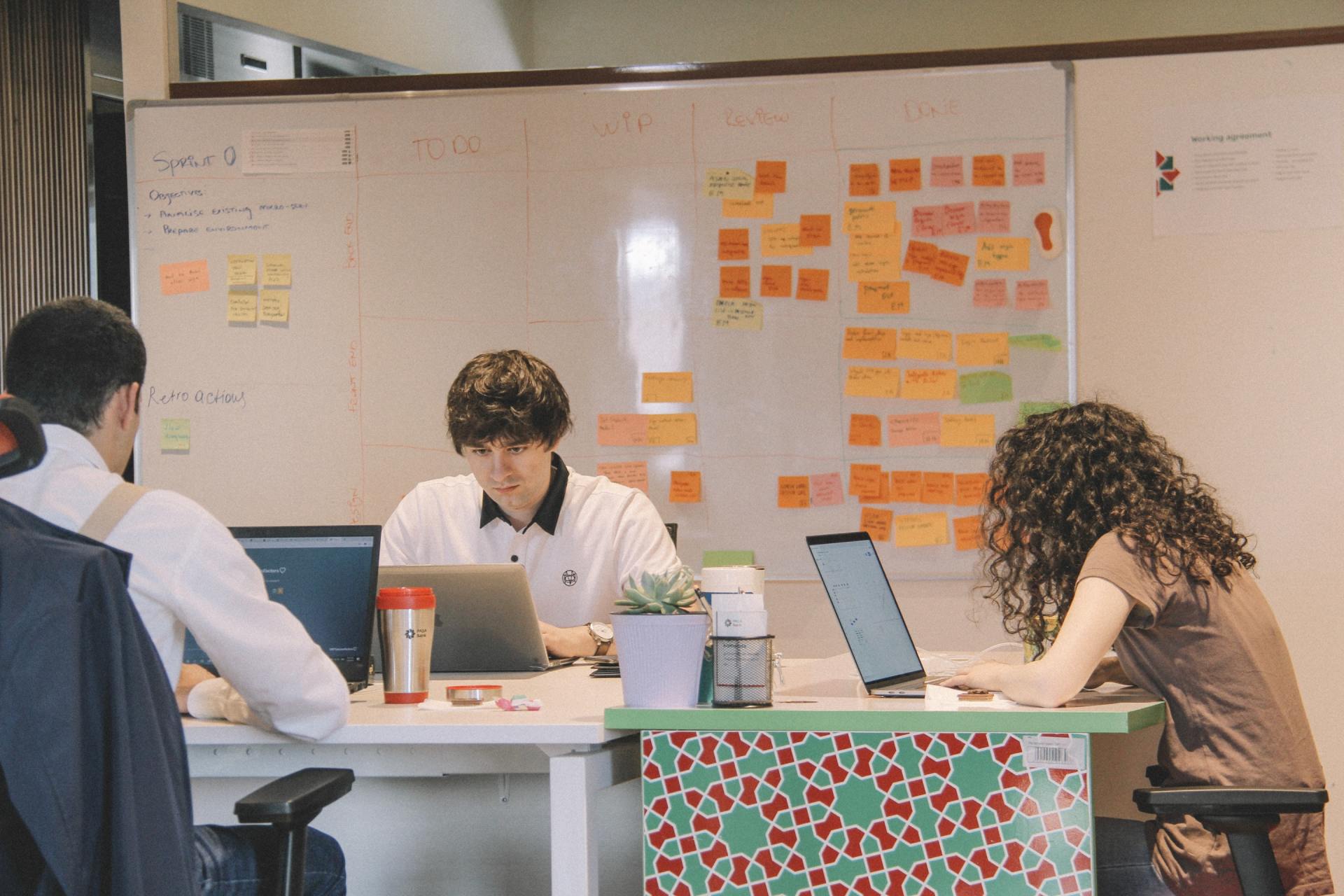
WHAT IS A LEARNING SOLUTION?
A learning solution refers to a comprehensive approach or set of strategies to facilitate learning and skill development. Training and education providers must tailor learning solutions to address specific learning objectives, target audiences, and educational contexts. Learning solutions can encompass a wide range of tools, resources, and methodologies aimed at helping individuals acquire knowledge, develop skills, and achieve desired outcomes. Here are some key components and characteristics of a learning solution:
- Learning Objectives: Learning solutions start with clearly defined learning objectives or goals. These objectives outline what learners must know or be able to do after completing the learning experience.
- Content: Learning solutions often include instructional content, which can take various forms, such as textbooks, digital courses, videos, presentations, or interactive modules. The content must convey the required information and facilitate understanding.
- Instructional Design: Effective learning solutions are often the result of sound instructional design principles. Instructional designers create structured and engaging learning experiences, considering factors like learner needs, content relevance, and instructional strategies.
- Technology: In today's digital age, many learning solutions incorporate technology, such as Learning Management Systems (LMS), e-learning platforms, virtual classrooms, and online assessments. Technology can facilitate access to learning materials, tracking progress, and providing interactive elements.
- Assessment and Feedback: Learning solutions often include assessments and feedback mechanisms to evaluate learner progress and provide opportunities for improvement. It can consist of quizzes, exams, assignments, and peer evaluations.
- Adaptability: Effective learning solutions may adapt to individual learner needs. Adaptive learning systems use data and algorithms to personalize the learning experience based on a learner's performance and preferences.
- Instructor or Facilitator: In some cases, learning solutions involve an instructor or facilitator who guides learners, answers questions, and provides support during the learning process. It is widespread in traditional classroom settings and some online courses.
- Resources: Learning solutions can also incorporate supplementary resources, such as textbooks, reference materials, online forums, and external websites, to enrich the learning experience.
- Feedback and Evaluation: After the learning experience, feedback and evaluation are crucial components. It includes assessing whether the learners achieved the course learning objectives and gathering feedback from learners to improve future iterations of the learning solution.
Learning solutions can vary widely depending on the educational context. They are used in schools, universities, corporate training programs, and other settings to facilitate learning and skill development. The choice of learning solution depends on the specific needs of the learners, the subject matter, available resources, and the desired learning outcomes.
WHAT IS A TEACHING METHOD?
Instructors use various teaching methods in educational settings, and the choice of method depends on the subject matter, learning objectives, student preferences, and available resources. Here are some different teaching methods commonly employed in courses:
Lecture-Based Teaching:
- Traditional Lectures: Instructors deliver content through spoken discourse, typically in a classroom setting. This method is suitable for presenting foundational knowledge.
- Guest Lectures: Inviting experts or professionals to speak on specific topics and share their insights with students.
Interactive and Discussion-Based Teaching:
- Classroom Discussions: Encouraging students to actively participate in discussions and debates to promote critical thinking and engagement.
- Case Studies: Analyzing real-life scenarios and cases to apply theoretical knowledge to practical situations.
- Group Discussions: Group activities that facilitate peer-to-peer learning and collaboration.
Experiential Learning:
- Hands-On Activities: Engaging students in practical, hands-on experiences to apply theoretical knowledge (e.g., lab experiments, simulations, fieldwork).
- Internships and Practicums: Internships and practicums offer students the opportunity to gain real-world work experiences in a field or industry related to their studies.
Problem-Based Learning (PBL):
- Instructors will challenge students with intricate real-world issues and assist them in discovering solutions through research, critical thinking, and collaborative efforts.
Project-Based Learning (PjBL):
- Instructors assign students long-term projects that require planning, execution, and presentation of outcomes, promoting creativity and problem-solving.
Flipped Classroom:
- Reversing the traditional teaching model, where students first engage with course content independently (e.g., through pre-recorded lectures or readings) and then use class time for discussions, group work, and application.
Online and E-Learning:
- Synchronous Online Classes: Real-time online lectures or discussions using video conferencing.
- Asynchronous Online Classes: Instructors facilitate self-paced learning using pre-recorded lectures and interactive discussion boards.
- Blended Learning: Combining in-person and online elements to maximize flexibility and engagement.
Collaborative Learning:
- Group Projects: Assigning tasks to small groups of students, encouraging collaboration and shared responsibility.
- Peer Teaching: Students teach course content to their peers, deepening their understanding and promoting active learning.
Active Learning:
- Role-Playing: Acting out scenarios to understand different perspectives or practice skills.
- Problem-Solving Sessions: Structured exercises that challenge students to solve problems individually or in groups.
Inquiry-Based Learning:
- Encouraging students to ask questions, explore topics of interest, and conduct independent research.
Self-Directed Learning:
- Instructors allow students to take control of their learning by setting their objectives, selecting resources, and managing their progress.
Assessment-Based Teaching:
- Designing assessments, such as quizzes, exams, essays, and projects, to drive the learning process and provide feedback.
Role of Technology:
- Incorporating educational technology, such as learning management systems, online resources, and multimedia, enhances teaching methods.
Microlearning:
- Delivering content in small, digestible units or modules to accommodate shorter attention spans and promote efficient learning.
Cooperative and Collaborative Learning:
- Fostering teamwork and group dynamics to achieve common learning goals.
Problem-Solving and Critical Thinking Exercises:
- Structured exercises that challenge students to think critically and solve complex problems.
Gamification and Simulation:
- Integrating game elements or simulations into the learning experience engages students and enhances retention.
Service Learning:
- Combining community service with academic instruction to provide students with real-world experiences and promote civic engagement.
Mentorship and Coaching:
- Providing one-on-one guidance and support from experienced mentors or coaches.
Effective teaching often involves a combination of these methods tailored to the specific course content, learner needs, and desired learning outcomes. The best teaching approach may also evolve as technology and pedagogical research advance.
More About INDENTRA LTD.
WE HAVE THE ANSWERS TO YOUR NEEDS
Careers
Press Releases
Accrediting Bodies
Strategic Alliances
Locations
Professional Associations
International Resellers
Explore Our Curriculum
RESOURCES
Brochures and Catalogues
Bookstore
Upcoming Webinars and Events












